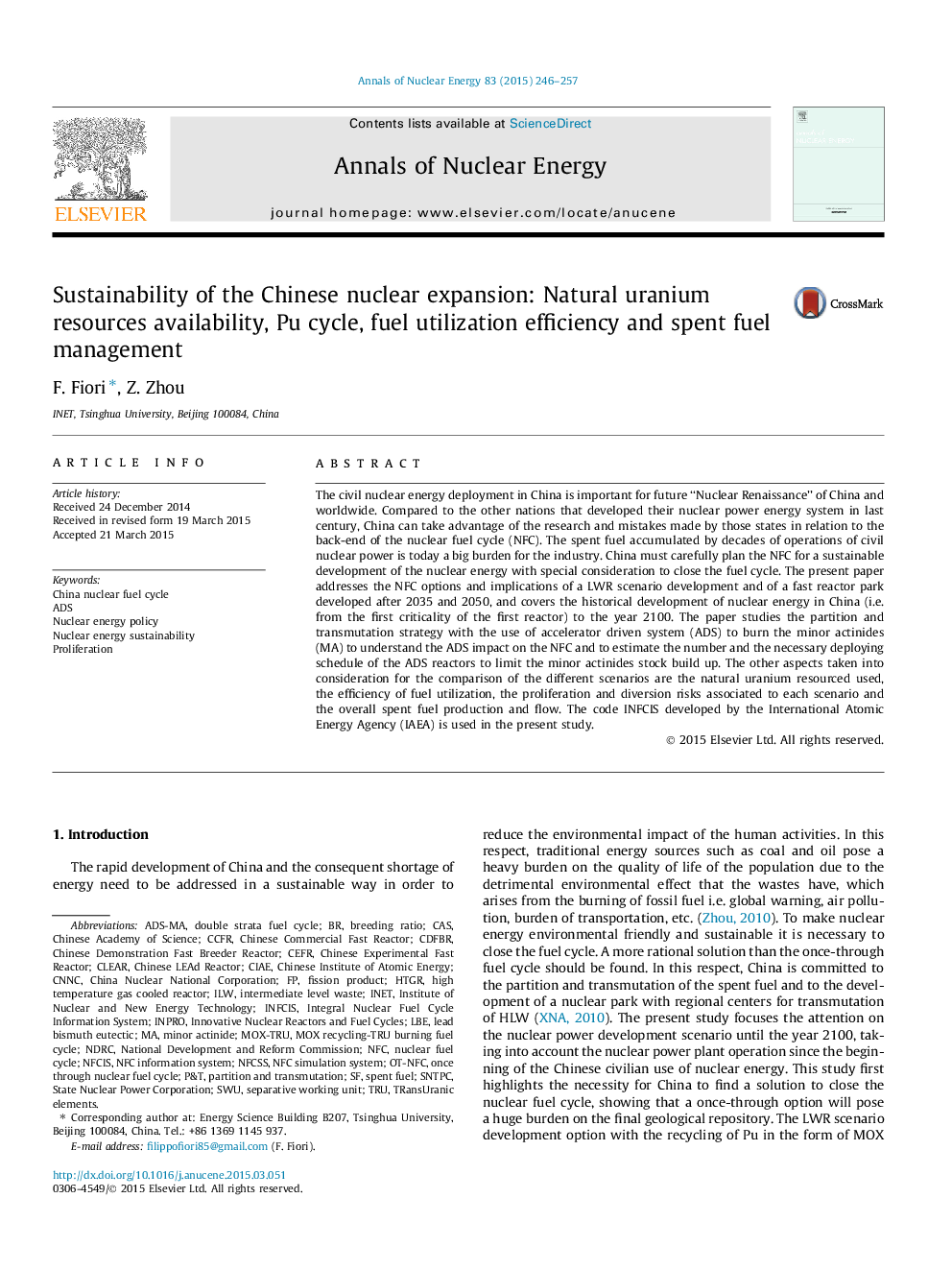| Article ID | Journal | Published Year | Pages | File Type |
|---|---|---|---|---|
| 8068447 | Annals of Nuclear Energy | 2015 | 12 Pages |
Abstract
The civil nuclear energy deployment in China is important for future “Nuclear Renaissance” of China and worldwide. Compared to the other nations that developed their nuclear power energy system in last century, China can take advantage of the research and mistakes made by those states in relation to the back-end of the nuclear fuel cycle (NFC). The spent fuel accumulated by decades of operations of civil nuclear power is today a big burden for the industry. China must carefully plan the NFC for a sustainable development of the nuclear energy with special consideration to close the fuel cycle. The present paper addresses the NFC options and implications of a LWR scenario development and of a fast reactor park developed after 2035 and 2050, and covers the historical development of nuclear energy in China (i.e. from the first criticality of the first reactor) to the year 2100. The paper studies the partition and transmutation strategy with the use of accelerator driven system (ADS) to burn the minor actinides (MA) to understand the ADS impact on the NFC and to estimate the number and the necessary deploying schedule of the ADS reactors to limit the minor actinides stock build up. The other aspects taken into consideration for the comparison of the different scenarios are the natural uranium resourced used, the efficiency of fuel utilization, the proliferation and diversion risks associated to each scenario and the overall spent fuel production and flow. The code INFCIS developed by the International Atomic Energy Agency (IAEA) is used in the present study.
Keywords
Related Topics
Physical Sciences and Engineering
Energy
Energy Engineering and Power Technology
Authors
F. Fiori, Z. Zhou,
